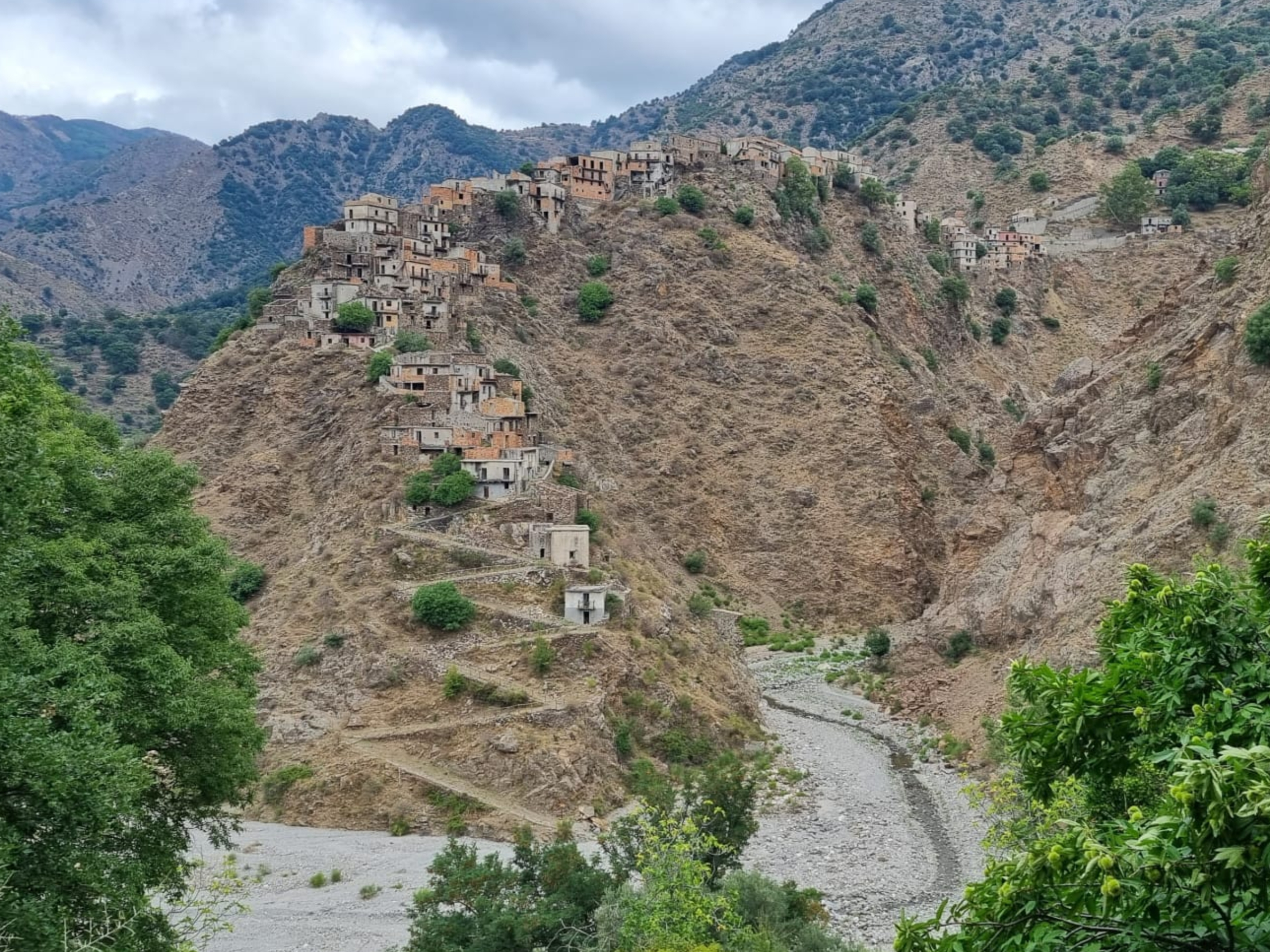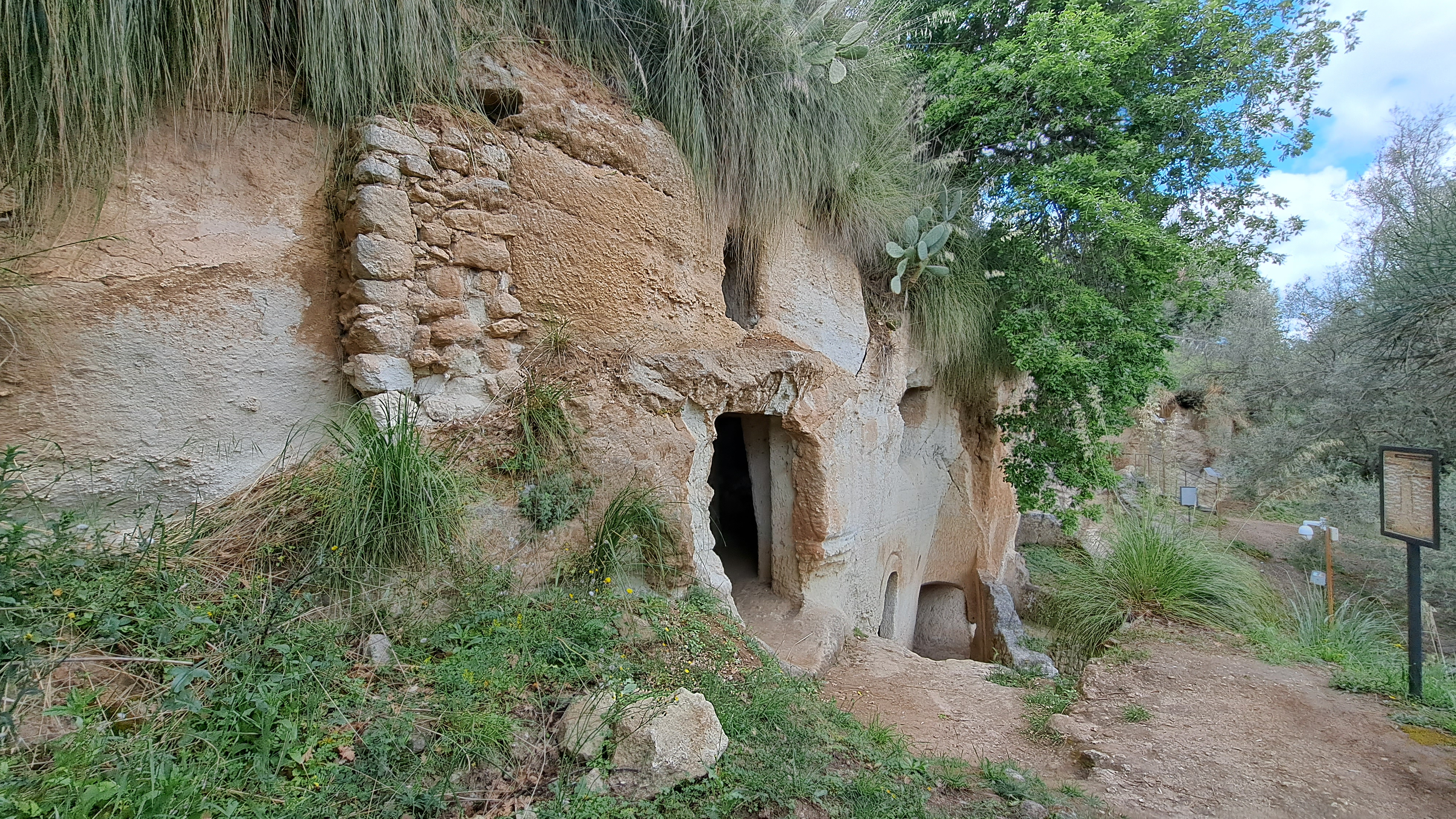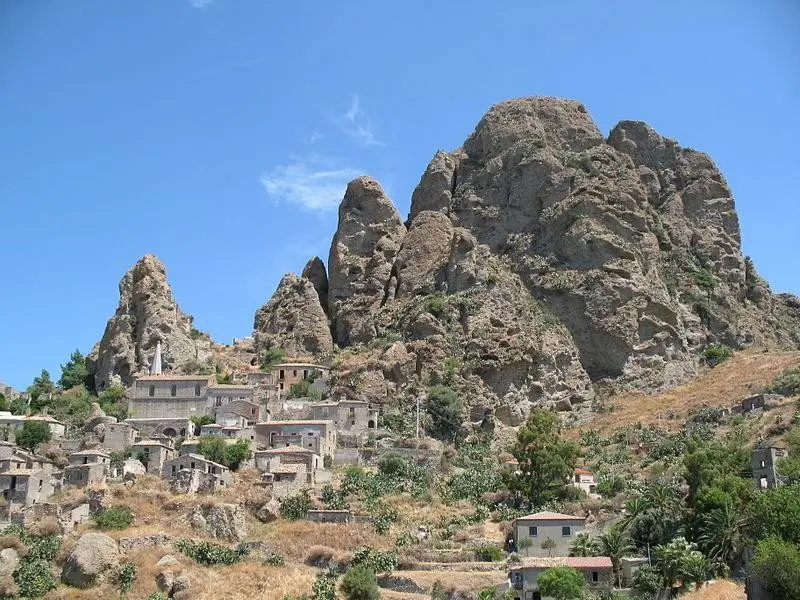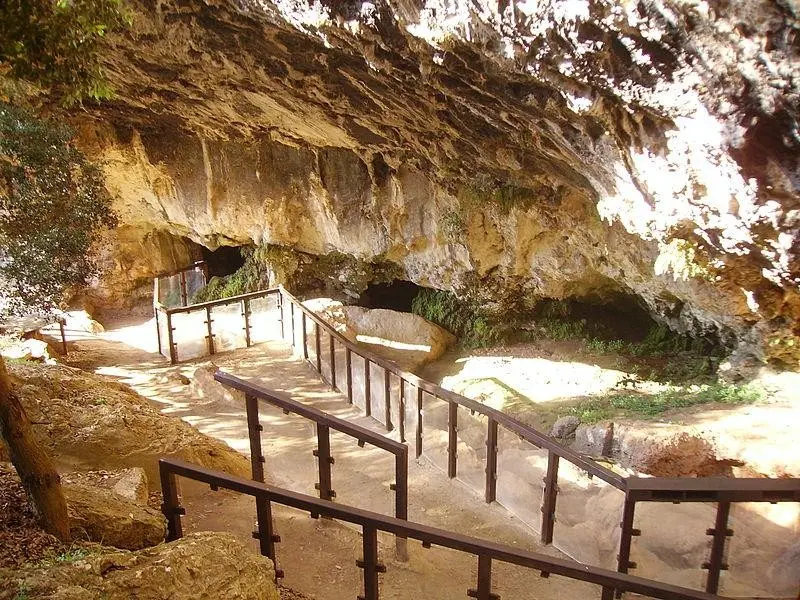The Calabria of ghost towns
Journey through abandoned villages, now film sets

Living slow
Creditis: Vincenzo Stranieri
Some call them "ghost-cities" or "ghost towns", in the case of small villages, a fascinating definition of places that were once inhabited and are no longer inhabited due to natural or man-made causes, such as disasters and more or less spontaneous emigration.
Calabria is rich in such places of memory, having suffered for many years both phenomena that led to the depopulation of entire territories. Among Calabria's "ghost towns" there are some truly suggestive ones, where mournful legends and a still tangible genius loci linger, wandering around abandoned ruins; others, repurposed and skilfully used as open-air film sets.
Let us discover them together, from north to south, in an itinerary to discover Calabria's "ghost cities".
The ghost towns in Calabria
Earthquakes and landslides, floods and emigration are among the most frequent reasons for the depopulation of Calabria, particularly of the small inland villages nestled on the mountain and hillside heights. Places that now look out to the sea from the heights of a solitude that has something dramatic, yet profoundly romantic about it. Abandoned houses are poetry, with their doors and windows wide open to rooms that still bear the original furnishings of yesteryear, the half-painted tables, the everyday objects almost waiting for their rightful owners to return to use them. A suspended universe is that of the "ghost towns" in Calabria, whose chapels shrouded in brambles, narrow streets cluttered with weeds and panoramic views between the sea and the mountains tell a fascinating story of traditions, myths and legends.
We set off on an itinerary among the ancient abandoned villages in Calabria to discover their past, present and, why not, future prospects. From north to south, the "ghost towns" that you can visit are:
- Avena
- Cirella Vecchia (or Ruins of Cirella)
- Fantino
- Acerenthia (or Cerenzia Vecchia)
- Papaglionti
- Roghudi
- Pentedattilo
- Africo Vecchia

Ghost towns in the province of Cosenza
The itinerary to discover the “ghost towns” starts from the province of Cosenza and the site of Avena, a hamlet of Papasidero, a village in the Pollino National Park already known for the Romito Cave (a prehistoric site of global importance). Avena is the “ghost town” of the “Valle del Fiume Lao” Nature Reserve, depopulated due to the 1982 earthquake. Clinging to its panoramic rock, Avena preserves the remains of buildings that are still full of charm, such as the Church of the Holy Trinity (16th century) and the Castle. The private homes seem frozen in time, with household objects left behind in anticipation of a return, in an atmosphere of precariousness shrouded in silence.
Also in the province of Cosenza, we explore the remains of ancient Cirillae, now known as the Ruins of Cirella, a hamlet of Diamante, along the beautiful Riviera dei Cedri Regional Marine Park. The medieval settlement dates back to the early 10th century. It was damaged several times by pirate attacks and then rebuilt until 1800, when it was finally destroyed by the bombardments of Napoleon's fleet. Walking among the walls of the ancient site, you will come across the remains of the Church of San Nicola Magno and the Mother Church, the Monastery of the Minims and the Convent of San Francesco di Paola (1545) with the adjoining Church of Santa Maria delle Grazie. The oldest remains, dating back to Roman times, reveal the presence of a villa and a mausoleum. Today, the site is home to the modern Ruderi Theatre, which every summer hosts artists and performances against the natural backdrop of the Island of Cirella.
Before leaving the province of Cosenza, let's discover the charm of Fantino, an abandoned hamlet in the municipality of San Giovanni in Fiore. Depopulated since the 1980s, this small ghost town at the foot of the Sila National Park overlooks the upper Neto Valley, offering a panoramic view. In the old town centre, characterised by local stone buildings and narrow alleys, you can still admire the ancient Church of San Giovanni Battista and, not far away, the Monastery of Santa Maria dei Tre Fanciulli (or Abbey of Patia).

Ghost towns in the province of Crotone
The itinerary following in the footsteps of Calabria's “ghost towns” takes us to the province of Crotone, where we are welcomed by ancient Acerenthia (or Akerentia), in the municipal area of present-day Cerenzia, near the river Acheronte, now known as Lese. The city, surrounded by high walls, was abandoned in 1844 due to the difficult sanitary conditions of the time, caused by epidemics and the earthquake of 1738. Among the streets of the abandoned village, there are still buildings that have withstood the passage of time, such as the Bishop's Palace, symbol and monument of Acherenthia, and the Church of San Leone and San Teodoro di Amasea. Near the village, the Basiliane Caves, one of the most important centres of Greek-Byzantine rites at the time, are worth a visit.

Ghost towns in the province of Vibo Valentia
The province of Vibo Valentia also has its own “ghost town”. It is Papaglionti, located 460 metres above sea level, near Zungri, where there is also an ancient rock site to visit: the Zungri Caves. The place name, probably of Greek-Byzantine origin, derives from Paleontos (or Papas Leonitius), possibly referring to the clergyman who owned the farmhouse. Like many other villages, Papaglionti was abandoned due to a flood in 1952, and today, although it is surrounded by brambles and nature that has reclaimed its space, it still preserves the remains of the Church of San Pantaleone and the 18th-century Palazzo di Francia, as well as the remains of houses frozen in time, with their furnishings waiting for a return. Along the road, there is also an interesting 17th-century calvary with a painting depicting the crucifixion.

Ghost towns in the province of Reggio Calabria
Finally, we reach the province of Reggio Calabria and three unmissable gems for lovers of ghost towns. The first village to visit is Roghudi, located 500 metres above sea level on a rock in the heart of the Amendolea river valley, in an area with a Greek ethnic minority. It is not easy to get there: the road is rough and, as the Greek name of the site suggests, full of “rogòdes” (or “rhekhodes”, harsh crevices), to which ancient and gloomy legends are linked. One of these tells of children tied to the outer walls of houses, on which the hooks still survive, to prevent them from falling into the precipices while playing unsupervised. Often, mysterious night-time disappearances were attributed to the naràde, mythological creatures that were half woman and half mule.
Not far away, among the most beautiful and redeveloped ghost towns in Calabria, is Pentedattilo, whose name in Greek literally means “five fingers” and refers to the particular shape of the rock spur on which the village is carved. Getting there is easy, and the view of the houses and the ancient church with its unmistakable bell tower is like a small nativity scene set in a cliff. The cliff is the same one that in the 16th century witnessed the tragedy known as the “Alberti massacre”, named after the noble family that owned the territory. A passionate and brutal crime, which is still shrouded in a dark legend that one day the “five fingers” of the mountain will close in on the village. The more daring can tempt fate and spend a night in the silent magic of the village, which offers tourists the hospitality of its renovated houses in the form of a scattered hotel and the folklore of its small artisan shops.
Finally, there are the ruins of Africo Vecchio, the original village that preceded the foundation of Africo Nuovo (on the coast, on the Costa dei Gelsomini), abandoned following a terrible flood in 1951. Reaching the ruins of Africo Vecchio, clinging to the most remote scrubland in the heart of the Aspromonte National Park, is no easy task. It is an excursion for the few, but the fascinating discovery at the end is well worth the effort! Everything is still frozen in time at the moment of abandonment: the houses, the primary school and the charming Church of San Salvatore.

https://calabriastraordinaria.it/en/news/the-calabria-of-ghost-towns












